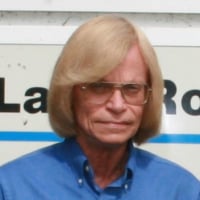Welcome! Here are the website rules, as well as some tips for using this forum.
Need to contact us? Visit https://heatinghelp.com/contact-us/.
Click here to Find a Contractor in your area.
If our community has helped you, please consider making a contribution to support this website. Thanks!
Domestic Water Heaters - Flue Temperatures and O2 readings
Options

captainco
Member Posts: 840
I have had trouble getting feed back on the O2 and Flue temperatures of FVIR water heaters. Most of the ones I had tested started out with flue temperatures in excess of 500 degrees and some over 600 degrees. O2 readings were between 4% to 6%. Just wondering if there has been a recent redesign. A concern I voiced years ago after they came out was could they be vented into B-vent if their exit temperatures exceeded 550 degrees. This is the temperature below the drafthood. The fact that older water heaters with scale in them reached temperatures in excess of 600 degrees when they initially started out at 400 degrees makes me wonder if these are a fire hazard in the future.
0
Comments
-
Jim,
I can't answer your question, but do you have an idea of what maximum temperatures B-vents are designed to work at?
Your posting makes me assume somewhere close to 600F.
Single pipe 392sqft system with an EG-40 rated for 325sqft and it's silent and balanced at all times.
0 -
-
Maybe @Tim McElwain will weigh in."If you can't explain it simply, you don't understand it well enough"
Albert Einstein0 -
Around 2000, we sent every commercial HWT that failed to the Natural Gas technologies Center as the utility wanted to know why they failed a few years after warranty. It was discovered that the users were not following the manufacturers maintenance recommendations. The most important was to flush the tank for a few minutes once a year. This led to deposits to sit at the bottom and isolate the metal from the water. The failures were near the welds as the metal was more brittle there. This also explains higher flue temperatures as there is less of a cooling effect due to the deposits.1
-
The FVIR water heaters didn't come out until July 2004. But because manufacturers stockpiles old ones it might have been 2005 before any were sold. They were quite a bit more expensive.
All water heaters can scale up and lead to high flue temperatures but the FVIR started out with temperatures that were higher than old ones with scale.0 -
Having not had installed one of these FVIR heaters, (I've only installed indirects and reverse indirects for the last 25 years) this is nothing but a WAG, but if I were the design engineer, and I knew I was going to be creating a restriction on the inlet (flame trap) to the appliance, short of including a draft inducer ($), I'd try and reduce the restrictions after the fire. In other words, I'd have less baffles in the flue gas stream. this would lead to increased stack temperatures, and lower O2 readings. What does they Excess Air look like? What does the diluted flue gas stream temperatures look like after the draft hood? How much draft are you seeing? What affect would a draft regulator have on this problem?
ME0 -
The O2 readings are still around 6% versus maybe 4-5%. Because of the high outlet temperatures I am afraid to recommend barometrics on them because they reduce dilution air and make the flue even hotter. I one week I tested two in the same day and both were brand new and the flue temps were in excess of 600 degrees. The one in our office brand new was about 530 degrees. 510 degrees Is the highest flue temperature we recommend on old water heaters caused by excessive scale. I am thinking the average I have seen was between 520 to 550 degrees. But I have seen just a couple of reports showing temperatures in the 400's but the O2 were 10% or higher which sound like they are now underfired.0
Categories
- All Categories
- 87.3K THE MAIN WALL
- 3.2K A-C, Heat Pumps & Refrigeration
- 61 Biomass
- 429 Carbon Monoxide Awareness
- 120 Chimneys & Flues
- 2.1K Domestic Hot Water
- 5.8K Gas Heating
- 115 Geothermal
- 166 Indoor-Air Quality
- 3.7K Oil Heating
- 77 Pipe Deterioration
- 1K Plumbing
- 6.5K Radiant Heating
- 395 Solar
- 15.7K Strictly Steam
- 3.4K Thermostats and Controls
- 56 Water Quality
- 51 Industry Classes
- 50 Job Opportunities
- 18 Recall Announcements


